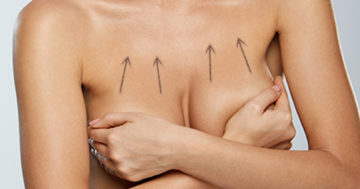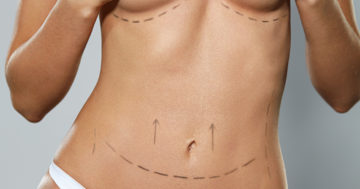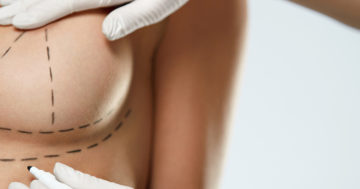Breast Reduction
Surgical Procedure
During surgery, breast fat, glandular tissue, and skin are removed, to make the breasts smaller, lighter, and firmer. An incision is usually made around the nipple and under the surface of the breast, like an upside down T. The nipple and areola are almost always left attached to their blood vessels and nerves. The skin from above the nipples is then pulled down to shape the new breast and a hole is cut for the new nipple and areola. If the breasts are particularly large the nipple may need to be completely removed and grafted to a higher position – this results in a loss of sensation to the nipple and areola.
2 NIGHT
4 - 6 HOURS
GENERAL ANAESTHESIA
Package Price

Post Operative Care
When you wake after surgery you will be wrapped in elastic bandages, gauze dressings and a surgical bra. A small tube may be placed in each breast to drain blood and fluids for the first day or two.
The extent of the post operative swelling and bruising depends on whether you tend to bruise or swell easily. Every person is different. Application of cold compresses or ice packs will reduce swelling and relieve discomfort.
A couple of days after surgery the pressure bandages will be removed. The surgical bra must be worn at all times for several weeks, until the swelling and bruising subsides, or until your surgeon advises you otherwise. You should only remove the surgical bra to bathe and to wash the garment.
Usually, sutures will be removed in the first week. Sometimes the surgeon will use dissolvable sutures. If the breast skin is very dry following surgery, a moisturizer can be applied several times a day. Vitamin E cream is extremely effective and also helps the scarring to heal, however the suture area must be kept dry at all times, particularly after bathing.
For the first few months it is important not to place tension on the incisions by performing strenuous activities like lifting or stretching your arms above your head, as this may increase scarring by stretching the tissue. You will need assistance to carry your groceries or hang your washing!
Your surgeon will try to ensure that your incisions are as subtle as possible, however it is important to remember that the scars are extensive and permanent. They may be red for months, and then slowly become fainter, eventually fading to thin white lines. In most cases the scars are positioned so that they would not be seen when wearing low-cut tops and dresses.
Recovery usually takes about two weeks. Most people are back to work within three weeks.
Risks and Complications
Risks are inherent to any surgical procedure. The most common risks are swelling, bruising, bleeding, infection, fluid, scarring, numbness, or a change in sensation to the nipple. The most common risk particular to this surgery is damage to the nerve and blood supply of the nipple. The possibility of breast feeding may decrease after surgery. Breast reduction is recommended for people that have had children already and do not wish to have any more. Breast reduction does NOT increase the risk of breast cancer and indeed may slightly decrease the risk. Mammograms will still be possible after surgery.
Scars will fade gradually but nipple numbness may take up to 12 months before sensation returns.



